Top Rankings
Pamlico County Schools School District ranks among the top 20% of public school district in North Carolina for:
Category
Attribute
Student Attention
Lowest student:teacher ratio (Top 1%)
For the 2025 school year, there is 1 public preschool serving 347 students in Pamlico County Schools School District. This district's average pre testing ranking is 9/10, which is in the top 20% of public pre schools in North Carolina.
Public Preschool in Pamlico County School School District have an average math proficiency score of 77% (versus the North Carolina public pre school average of 51%), and reading proficiency score of 47% (versus the 46% statewide average).
Minority enrollment is 45% of the student body (majority Black), which is less than the North Carolina public preschool average of 59% (majority Black and Hispanic).
Overview
This School District
This State (NC)
# Schools
4 Schools
994 Schools
# Students
1,215 Students
464,055 Students
# Teachers
96 Teachers
33,275 Teachers
Student : Teacher Ratio
13:1
13:1
District Rank
Pamlico County Schools School District, which is ranked within the bottom 50% of all 320 school districts in North Carolina (based off of combined math and reading proficiency testing data) for the 2021-2022 school year.
The school district's graduation rate of 85-89% has decreased from 90-94% over five school years.
Overall District Rank
#183 out of 325 school districts
(Bottom 50%)
(Bottom 50%)
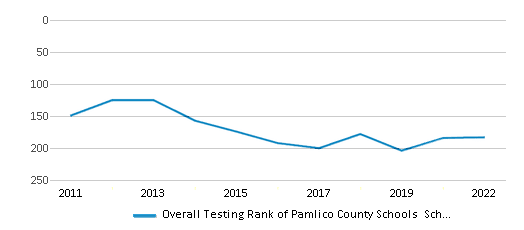
Math Test Scores (% Proficient)
50%
51%
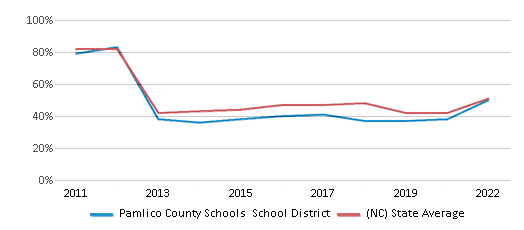
Reading/Language Arts Test Scores (% Proficient)
45%
50%
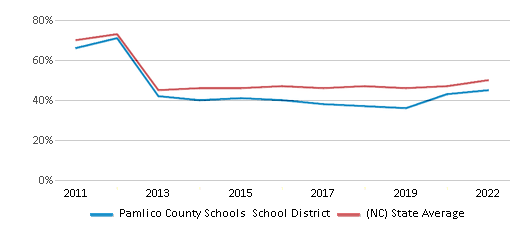
Science Test Scores (% Proficient)
63%
63%
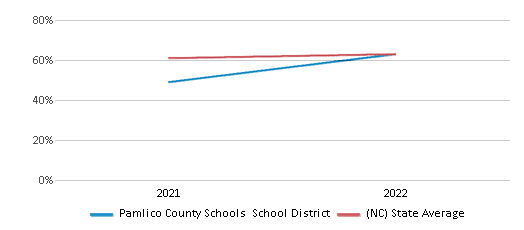
Graduation Rate
85-89%
86%
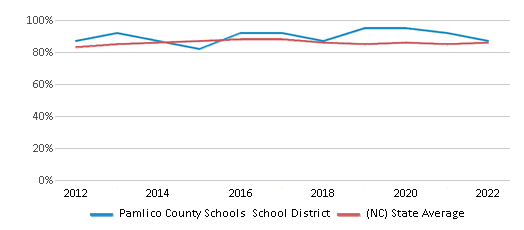
Students by Ethnicity:
Diversity Score
0.61
0.72
# American Indian Students
8 Students
6,572 Students
% American Indian Students
1%
1%
# Asian Students
4 Students
18,458 Students
% Asian Students
n/a
4%
# Hispanic Students
132 Students
105,943 Students
% Hispanic Students
11%
23%
# Black Students
219 Students
114,509 Students
% Black Students
18%
25%
# White Students
712 Students
189,147 Students
% White Students
59%
41%
# Hawaiian Students
3 Students
648 Students
% Hawaiian Students
n/a
n/a
# Two or more races Students
137 Students
28,778 Students
% of Two or more races Students
11%
6%
Students by Grade:
# Students in PK Grade:
37
23,104
# Students in K Grade:
79
72,144
# Students in 1st Grade:
82
74,289
# Students in 2nd Grade:
74
75,942
# Students in 3rd Grade:
75
68,925
# Students in 4th Grade:
67
69,686
# Students in 5th Grade:
92
66,668
# Students in 6th Grade:
70
5,021
# Students in 7th Grade:
92
3,684
# Students in 8th Grade:
93
3,629
# Students in 9th Grade:
115
214
# Students in 10th Grade:
137
194
# Students in 11th Grade:
101
187
# Students in 12th Grade:
101
368
# Ungraded Students:
-
-
District Revenue and Spending
The revenue/student of $17,044 is higher than the state median of $11,187. The school district revenue/student has stayed relatively flat over four school years.
The school district's spending/student of $15,621 is higher than the state median of $11,612. The school district spending/student has stayed relatively flat over four school years.
Total Revenue
$21 MM
$17,307 MM
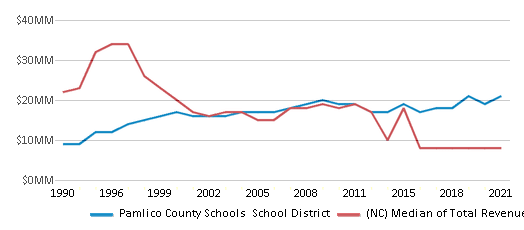
Spending
$19 MM
$17,964 MM
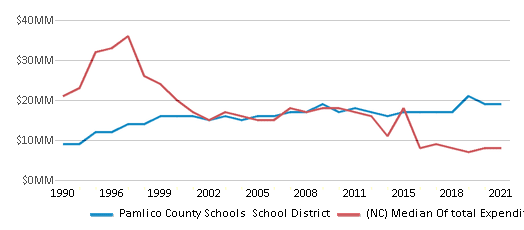
Revenue / Student
$17,044
$11,187
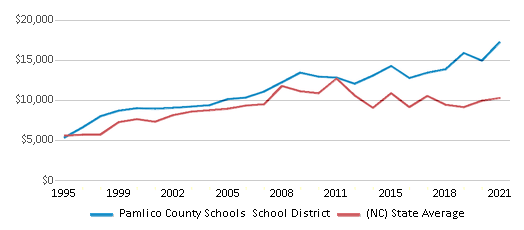
Spending / Student
$15,621
$11,612

Best Pamlico County Schools School District Public Preschools (2025)
School
(Math and Reading Proficiency)
(Math and Reading Proficiency)
Location
Grades
Students
Rank: #11.
Pamlico County Primary
(Math: 75-79% | Reading: 45-49%)
Rank:
Rank:
8/
Top 30%10
323 Neals Creek Road
Bayboro, NC 28515
(252) 745-3404
Bayboro, NC 28515
(252) 745-3404
Grades: PK-3
| 347 students
Recent Articles

Year-Round Or Traditional Schedule?
Which is more appropriate for your child? A year-round attendance schedule or traditional schedule? We look at the pros and cons.

Why You Should Encourage Your Child to Join a Sports Team
Participating in team sports has a great many benefits for children, there is no doubt. In this article you will learn what those benefits are.

White Students are Now the Minority in U.S. Public Schools
Increasing birth rates among immigrant families from Asia and Central and South America, combined with lower birth rates among white families, means that for the first time in history, public school students in the United States are majority-minority. This shift in demographics poses difficulties for schools as they work to accommodate children of varying language abilities and socio-economic backgrounds.





